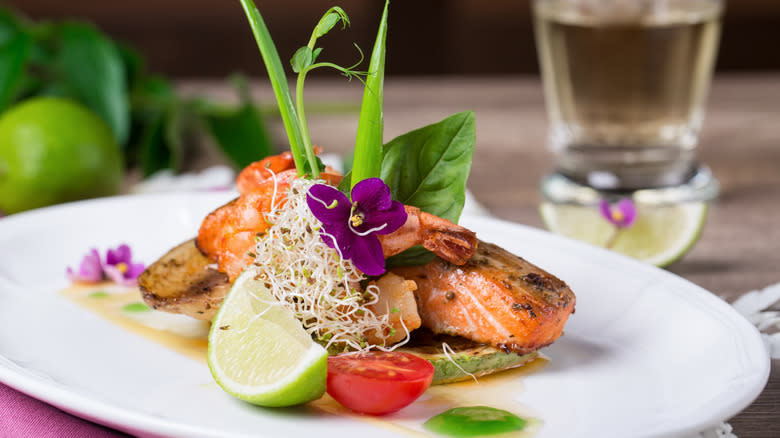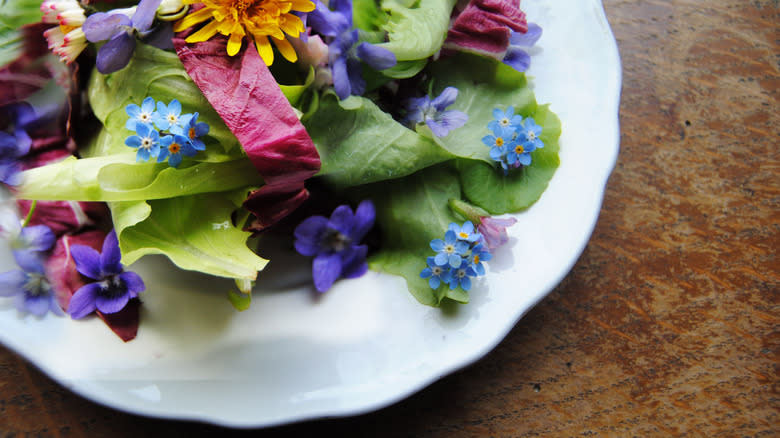Are Wild Violet Flowers Edible?

If you've been to any fancy restaurant, you've probably ended up with some wild violet flowers on your plate. You've probably also mulled over a dilemma, particularly if you're not a fan of food waste: Are these things edible? Or are they just for show?
The answer depends on which part of the plant has been included in your meal. The roots and seeds are toxic, so if, by some terrible accident, they have ended up as your garnish, they should be avoided. However, the vibrant purple flowers and the leaves are perfectly safe to eat, and their delicate flavor profile means they work with just about anything. Wild violets have a very faint sweetness, but not to the extent that they overpower a dish's primary flavors. By contrast, similarly edible (and purple) plants like lavender have a strong herbal taste that some find soapy or medicinal, making them less applicable for culinary uses.
Read more: 7 Nuts You Should Be Eating And 7 You Shouldn't
How Are Wild Violets Used In Cooking?

Wild violets can be grown at almost any time of year, are self-seeders, and need very little care. When the growth process is so low-effort, and the end product is both beautiful and tasty, it's easy to surmise why wild violets have been a culinary staple for thousands of years. The Ancient Romans brewed violatium, a wine infused with fresh violets and honey, and 15th-century Brits were partial to a vyolette, a creamy pudding made with boiled violet petals.
Violet flowers combine nicely with most things, but there are certain foods that they really elevate. Their light sweetness works particularly well with desserts, specifically ones that suffer from looks-a-bit-boring-on-its-own syndrome. Sprinkling a mix of wild violets and seasonal berries over the top of classic New York cheesecake introduces a beautiful pop of color and creates a more interesting flavor profile with creamy, floral, and fruity notes. If you're making a fruity salad, such as an apple walnut or strawberry salad, you can add young wild violet leaves as well as the flowers to utilize more of the plant. The leaves have a lettuce-like taste with a hint of sweetness and will blend perfectly with salad greens. For an after-dinner (or during-dinner) drink, violet syrup can be used in a floral variation on a daiquiri. For a woody, aromatic cup of tea, steep violet flowers in boiling water.
Read the original article on Mashed.

